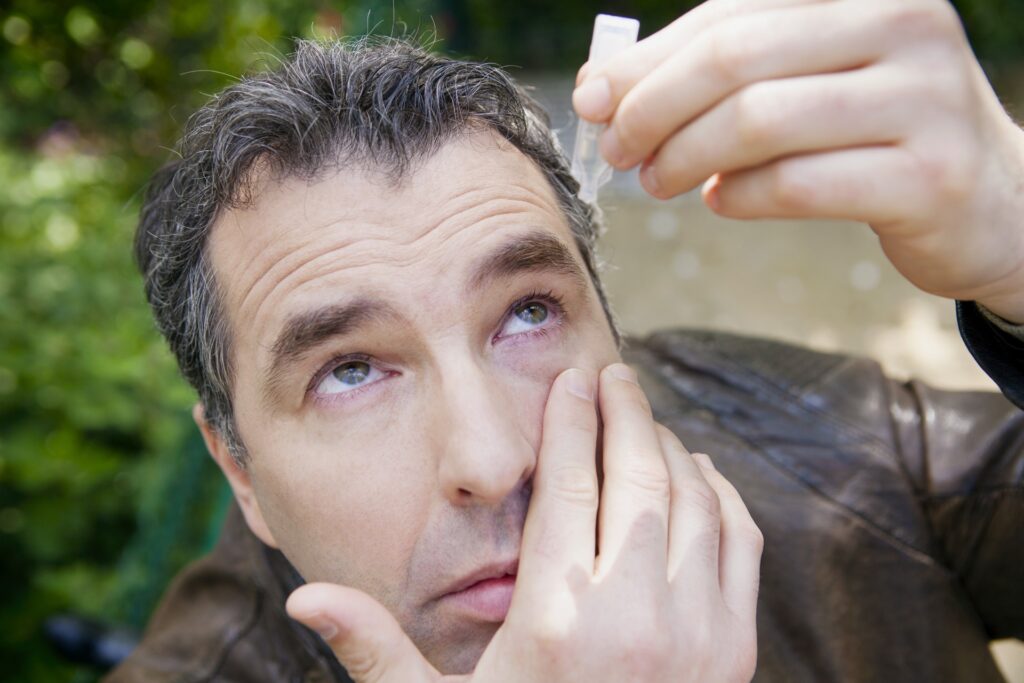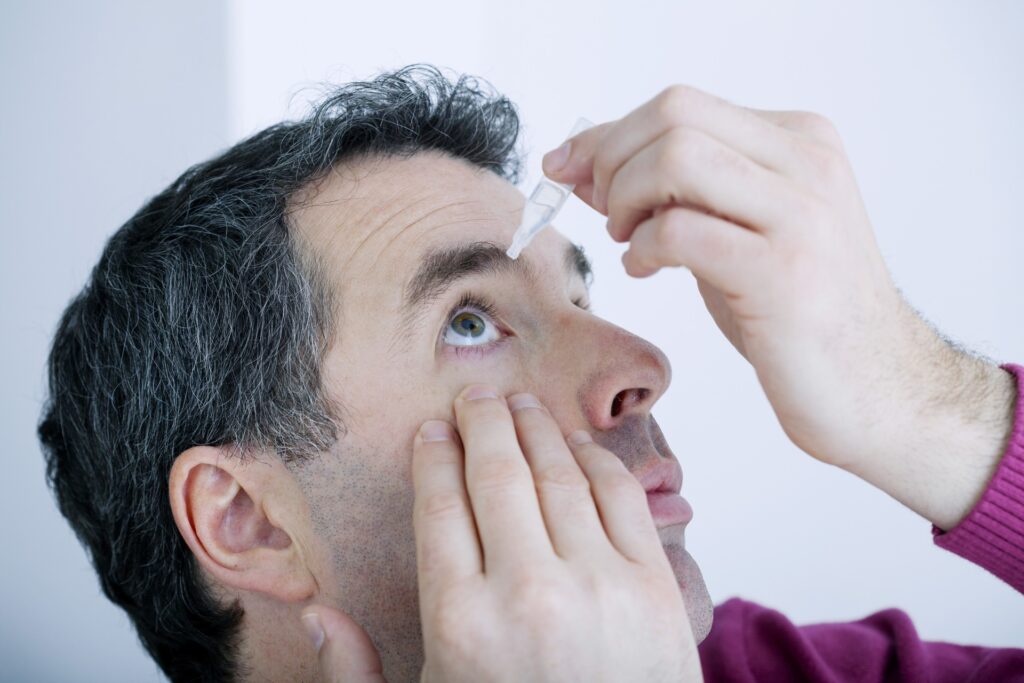While eating carrots hasn’t actually been proven to help treat your vision, there is one thing that can help: taking the right eye drops. While your optometrist may prescribe specific ones to you, knowing what over-the-counter ones to use can also help greatly. But, how do you choose eye drops for your needs?
Below we break down how eye drops help, which ones to look for, and other ways to get healthy eyes and the best vision.
How Is Dry Eye Disease Treated?
Artificial tears, medications, or steroid eye drops may be used to manage the symptoms of dry eye disease. How specifically a patient’s eyes are treated depends on both the underlying cause and severity of the condition though.
What Preservatives Are in Eye Drops?
To ensure each dose is sterile, most eye drops contain preservatives, most commonly benzalkonium chloride (BAK). However, this is an issue. BAK has been shown specifically to worsen many symptoms of dry eye disease and increase inflammation.
There are some eye drops that use preservatives other than BAK. Oxidizing preservatives, for example, don’t affect the eye surface as much as BAK does while still offering relief.
That being said, there is still research being done regarding eye drops. While these products may work well for people dealing with mild or moderate cases of dry eye disease, they should be avoided for those dealing with severe cases.
Are There Preservative-free Eye Drops and Should You Use Them?
There are preservative-free eye drop formulations out there. In fact, they have been shown to significantly improve symptoms in patients with severe dry eye disease while showing little to no adverse effects.
However, they come in single-use vials and are less affordable than multidose products.
What Are the Main Chemicals in Eye Drops?
Hyaluronic acid (HA) is another common chemical in eye drops. The salt form of HA, Sodium hyaluronate, is generally used because it’s a more stable compound for topical application.
It’s put into eye drops because it binds to water, prevents dehydration, and is highly biocompatible as it is naturally found in high concentrations in the eye.
In fact, studies show HA improves optical quality, promotes corneal epithelial wound healing by stimulating epithelial migration, and protects corneal epithelial damage.
So what concentration of HA is best in eye drops: 0.1%, 0.18% OR 0.3%?
In Choen’s 2018 Study, all concentrations helped improve overall DED symptoms, but around 0.2% was the sweet spot for the best results in general with concentrations greater than that still good for more severe cases for those who are okay with some blur post-instillation.
What Other Bioprotectants Are in Eye Drops?
Trehalose (TH) is a natural disaccharide that is both a bioprotectant and an osmoprotectant. On the eye, it protects corneal and conjunctival cells from desiccation (cell death in absence of water).
Are Eye Gels/Ointments Better Than Eye Drops?
If your eye symptoms are more severe, it may be more effective to use a lubricating gel or ointment instead of eye drops. Talk to your optometrist to see which one is best for you.
However, it’s important to understand that gels and ointments can cause blurry vision for a while after you put them in your eyes. Gels and ointments can offer even better treatment than eye drops, but are typically thicker than regular eye drops and will stay in your eye for a longer period of time. Thus, the best time to use them is right before going to bed.
What Are Eye Gels Used For?
Eye gels are primarily used to treat dry eyes. They can come as a more viscous type of eye drop or as an insert that will dissolve over time when placed in between your eyelid and eyeball. They perform a similar role to eye drops when treating dry eye but will take more time to become effective in the process of lubricating the surface of your eye.
What Are Eye Ointments Used For?
Ointments are typically more effective at treating symptoms than eye drops and can treat a greater number of symptoms compared to eye gels. Once you have applied an ointment to your eye, it will break into tiny drops which will accumulate between your eyeball and eyelid. Similar to gels, ointments take more time to become effective and will cause the blurriest vision (compared to eye gel or eye drops) when they are applied.
Overall, eye drops, gels, and ointments are all effective options for treating dry eyes and other conditions, but be mindful of the preservatives included in eye drops particularly.


